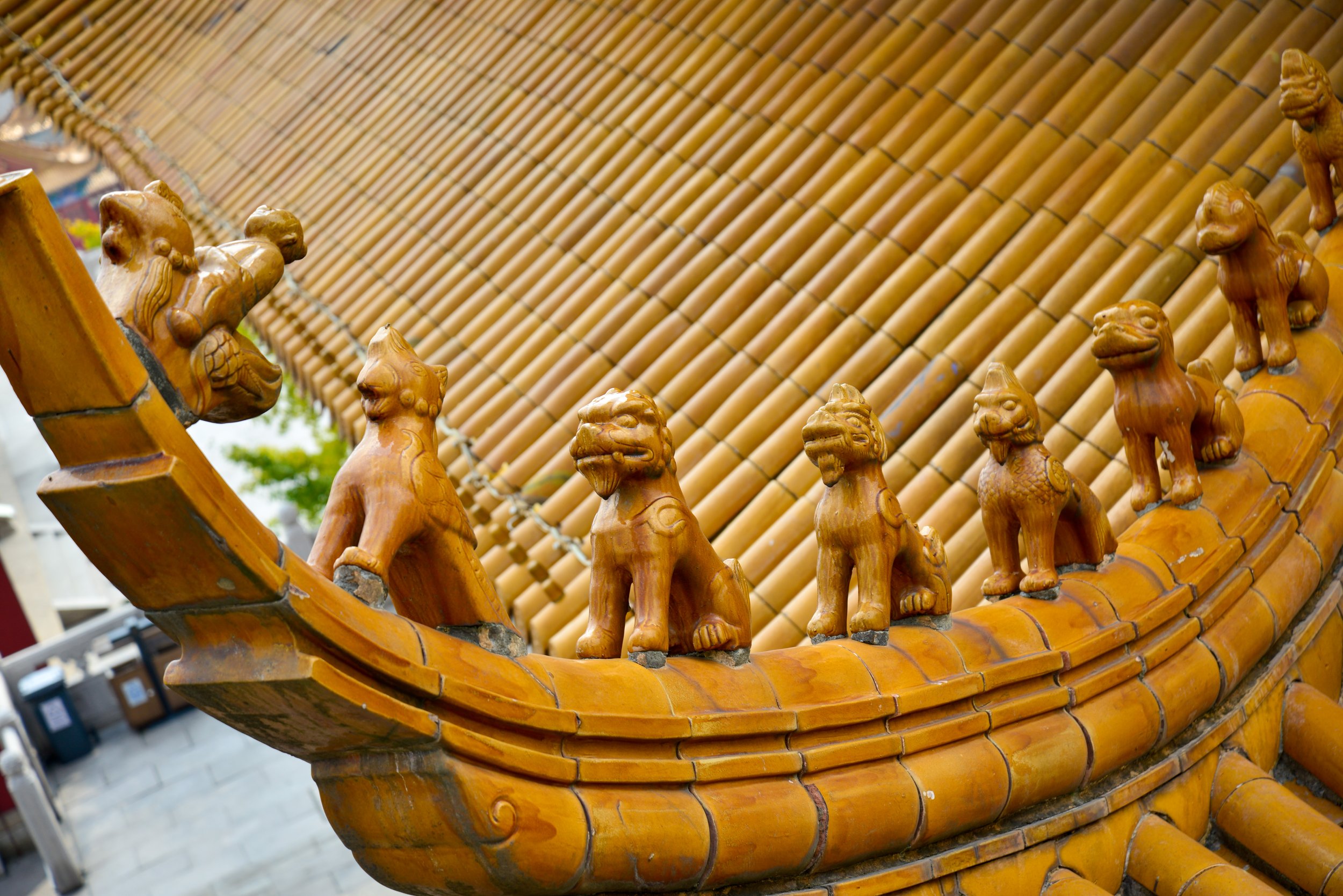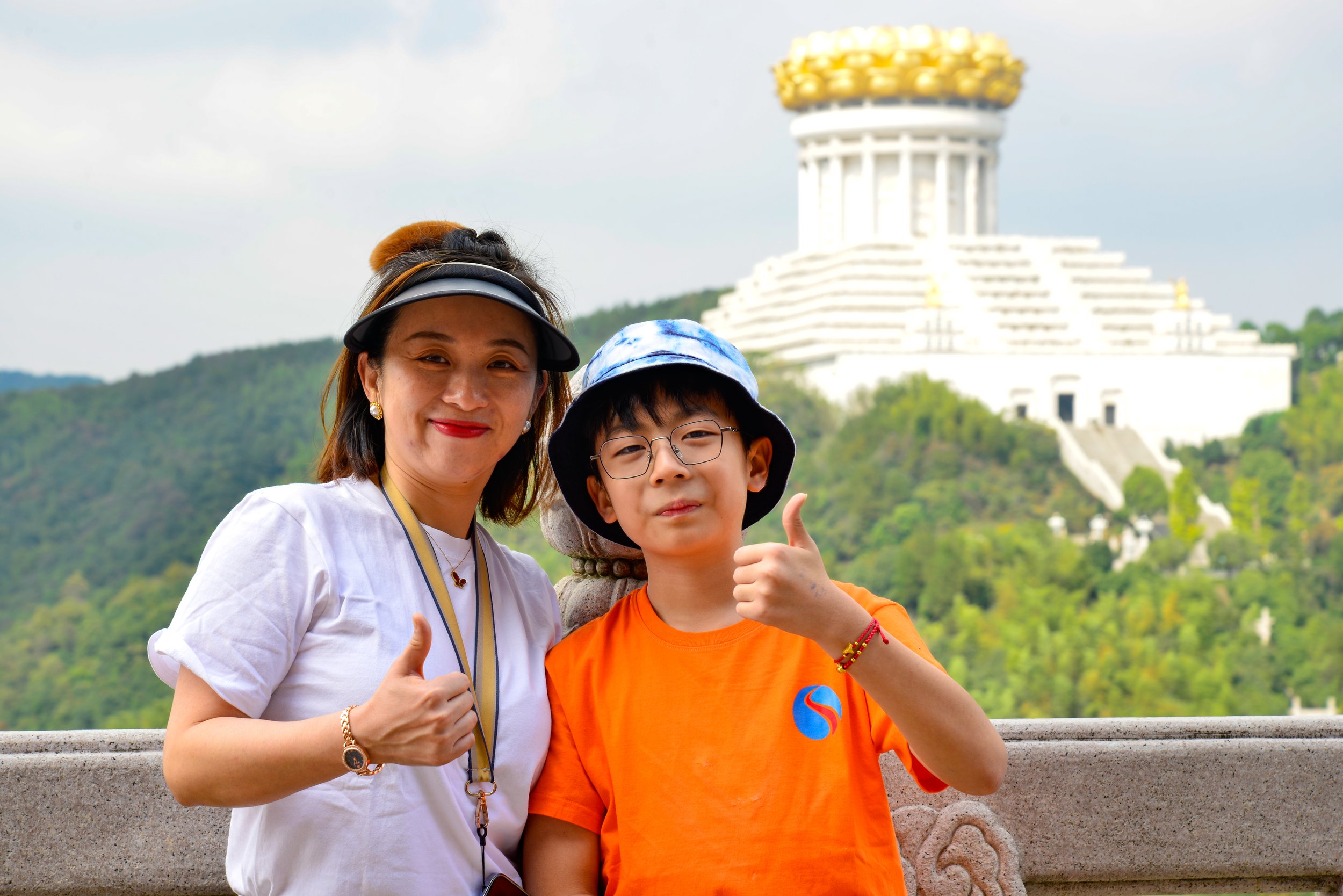
> TRAVEL FILES <
THE SIGN HUNTERS
@thesignhunters • #thesignhunters • #handfulsadventures • #apiginchina
CHINA: Exploring the Daxiangling-Tusita Scenic Area in Shaoxing
Written by Laszlo, 03 November 2022
Our little explorer team has recently visited the Daxiangling–Tusita Scenic Area (大香林·兜率天景区). Even though we had plenty of time, the area is too large to squeeze everything into one day, so we focused on the two main attractions: Longhua Temple (龙华寺) and the truly majestic Heavenly Palace (兜率天宫).
The Scenic Area is located in the western end of Huiji mountain (会稽山) in Keqiao District (柯桥区), Shaoxing City (绍兴市) and covers about 4 square km. It is divided into three realms: Daxiangling, Longhua Temple, and Tusita, also known as the Heavenly Palace.
The first realm of Daxianglin literally means “big fragrant forest”. The variety of tree species here makes this place an area where blossoms can be enjoyed throughout the year.
With a building area of more than 40,000 square meters, Longhua Temple forms the second real which is the largest single royal-style Buddhist monastery in China. There are meditation halls and fasting halls that can accommodate up to 500 people at the same time, as well as monks' dormitories and guest halls.
The Third Realm leads to the truly magnificent Tusita, also known as Heavenly Palace or Doulu Tiangong (兜率天宫). It is located on Baolin Peak (宝林峰) 321 meters above sea level, which is the first peak in the northwest of Huiji Mountain. It is separated from Longhua Temple with a dip which is filled with water to give space to a small reservoir called Perfume Sea (香水海).
The Heavenly Palace (Tusita) was designed according to the original version of the Three Classics of Maitreya consisting of, from the bottom to the top, the Seven-fold Treasure Wall (or seven treasure plains), through the Heavenly Courtyard, to the Purple Golden Lotus.
The base of Tusita is called Baoyuan (宝垣) and it is 99 metres wide, 160 metres long, and 28 metres high. The Seven-fold Treasure Wall is carved with statues of arhats and bodhisattvas and Buddhas in the heavens. The outer perimeter of Baoyuan is equipped with 5,000 metres of carved, white marble railings, resembling white clouds supporting the entire Heavenly Palace.
The cylindrical part in the middle of Tusita is the Heavenly Courtyard (or inner courtyard) which enshrines the world's largest indoor seated Buddha, the 33-meter-high Maitreya statue. The inauguration and consecration ceremony of the Buddha statue were held on the 26th December 2015.
The Purple Golden Lotus flower at the top of Tusita is 16 metres high, 56.7 meters in diameter and counts 48 bronze golden petals, which makes it the largest in the world. The giant lotus flower symbolises that Maitreya Bodhisattva leads all beings in the world who hold the five precepts and do ten virtues to lead the pure land to the past life, and also represents the lotus flower stepped on by the Buddha's feet, and the lotus flower is enshrined with the giant phaseless Buddha.
Tusita is the fourth layer of the desire world of the Buddhist cosmology, which means joyful heaven, which is the most special “pure land” in the desire world, and the great monks of all generations have always been born in their Buddha's pure land. The inner courtyard of the Heavenly Palace is the place where the future Buddha Maitreya Bodhisattva speaks for the heavenly people.
Behind the Heavenly Palace, an open-air statue of the Northern Duowen Heavenly King, with a Dharma Cave built inside the statue for Dharma and Fu Dashi can be found.
The entrance ticket to the Scenic Area is 100 RMB for a person, which offers a whole day adventure. We only had time for Longhua Monastery and the Heavenly Palace. Enjoy the photo journey through these beautiful sites.
Official tourist map of the Daxiangling-Tusita Scenic Area (click on the image if you wish to download it in large-scale)
Official entrance ticket as of October 2022, front and back sides (click to enlarge)
Longhua Temple
Heavenly Palace (Tusita)
The village “next door”: Fugui Xiangling (富桂香林村)

















































































































